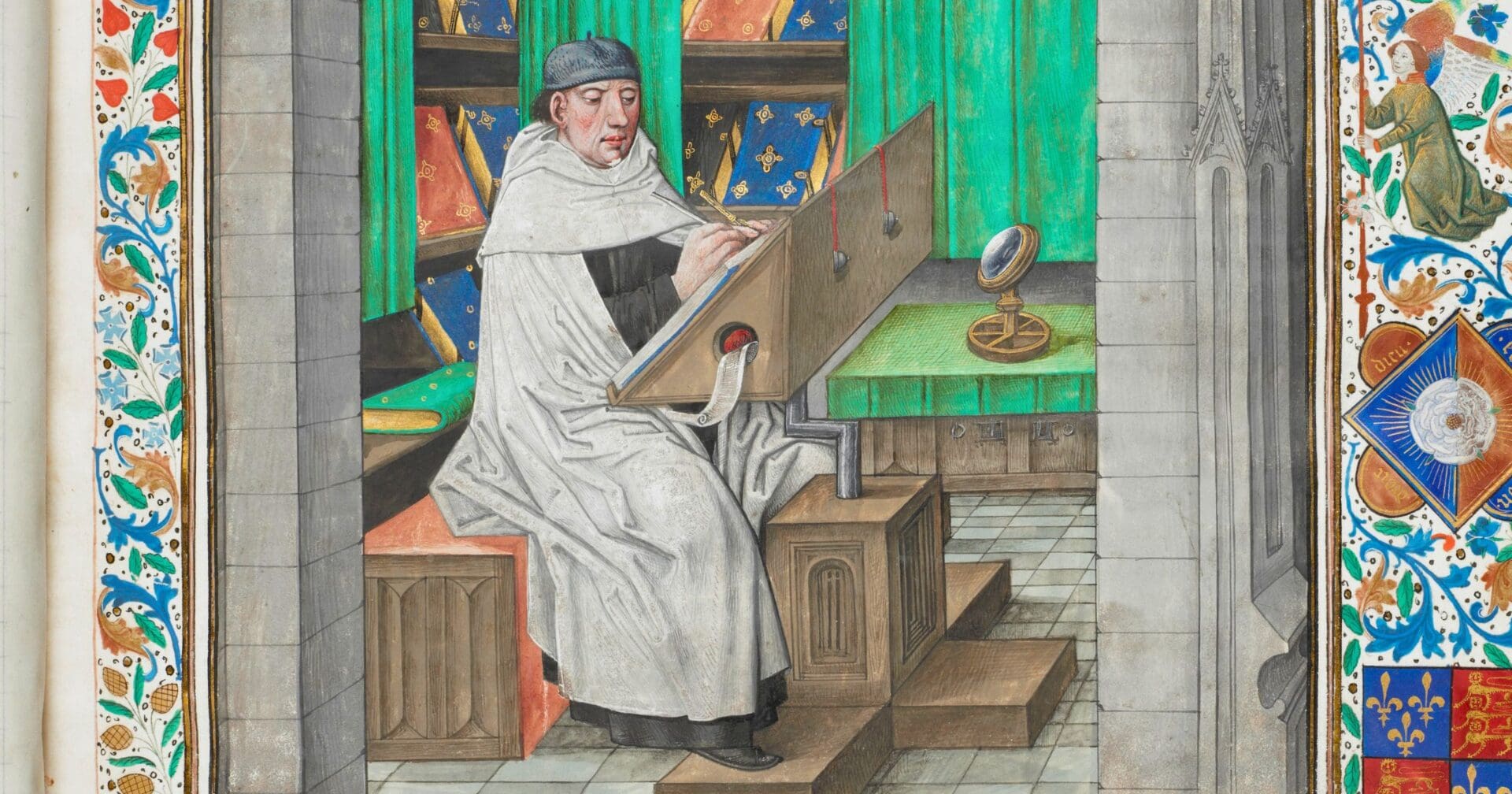In the heart of medieval monasteries, nestled within the quiet walls, there thrived a vibrant world of literature and art – the scriptorium!
Not just any room, a scriptorium was where monks meticulously copied and illuminated manuscripts, breathing life into texts with their diligent hands and pious hearts. But did you know, not every monastery boasted a special room for this sacred task? Indeed, many scribes found solace in their own quarters or the monastery library, their single figures a common sight in medieval depictions of scribing.
Imagine the scene: a scribe, bent over a manuscript, his fingers carefully guiding a quill over smooth parchment. His world is one of quiet dedication, a meditative rhythm of pen on paper. This was no ordinary job. The scribe’s work was as laborious as ploughing fields, as one tenth-century prior lamented, “It dims your eyes, makes your back ache, and knits your chest and belly together. It is a terrible ordeal for the whole body.”
The scriptorium was not just a place of labor, but of collaboration and innovation. Here, secular and clerical scribes worked side by side, with women also playing a significant role. From the religious communities in Germany to the nuns of Chelles Abbey in France, women religious scribes left an indelible mark on medieval texts. This was a world where the pen was mightier than the sword, and manuscripts were a valuable currency, reflecting the social and cultural ties of their creators.
The evolution of the scriptorium is a tale of transition, from monastic exclusivity to eventually the advent of the printing press. Each change brought about new dynamics, yet the essence of the scriptorium remained – a place of devotion to God and scholarship.
For example, there are stories of monks like Cassiodorus, who in his Vivarium monastery, envisioned a scriptorium with a sundial, a water-clock, and a “perpetual lamp.” He recognized the power of the written word, declaring, “every work of the Lord written by the scribe is a wound inflicted on Satan.”
In these sacred spaces, the mundane act of writing transcended into a spiritual journey. The scriptorium was not just a room; it was a crucible of culture, a sanctuary where the mind and soul found expression in ink and parchment.
So, the next time you pick up a book, remember the humble beginnings of these texts in the quiet, earnest scriptoria of the Middle Ages!
Photo credit: Public Domain via Wikimedia Commons
















